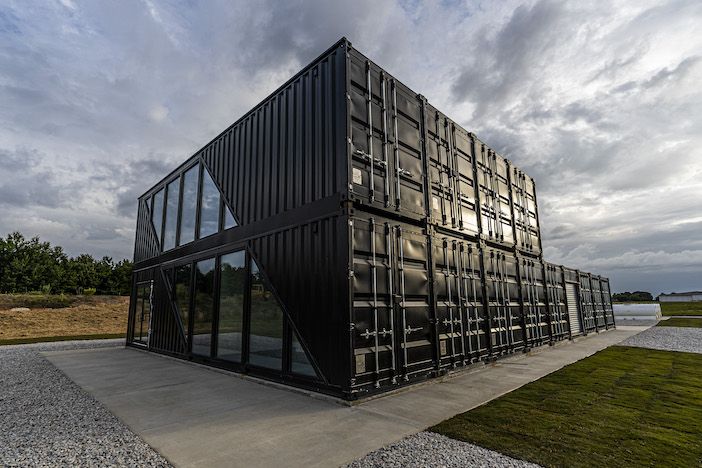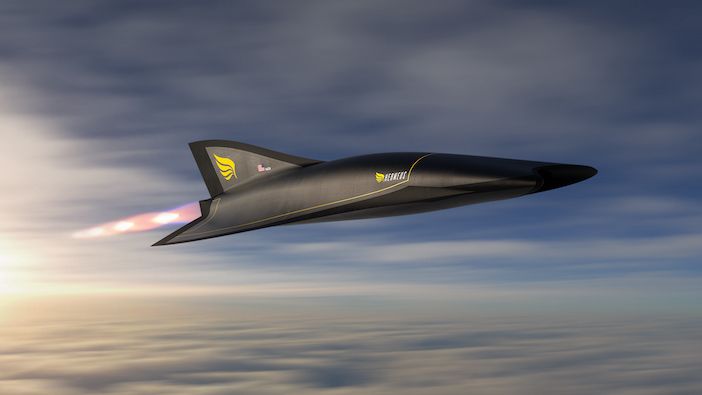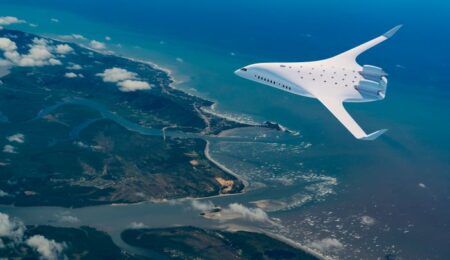Hypersonic aircraft-developer Hermeus has completed its first engine test campaign after building a new testing facility in just a month.
The engine testing site, which the company is calling Site 27 because it is adjacent to runway 27 at DeKalb-Peachtree Airport, Atlanta was constructed from maritime shipping containers in 33 days. The facility is hosting the ground testing of the Mach 5 engine the company is developing to power its aircraft.
Hermeus plans to develop three high-speed aircraft and to fly the first, the Quarterhorse as early as next year.
The company was founded in 2018 with the goal of developing a 20-seat, Mach 5-capable (more than 3,000mph) passenger aircraft by the end of this decade. At Mach 5, for example flight times from New York to London would be reduced from 7 hours to 90 minutes.

Hermeus has attracted funding from private investors and the US Government, including US$1 million to design a hypersonic presidential jet, and a research partnership with NASA. The startup was awarded US$60 million last month to develop the Quarterhorse unmanned hypersonic testbed for the US Air Force, which will be used in flight testing of its new engine in late 2022. The company also plans to fly a cargo-carrying mid-size aircraft during 2025.
Engine testing
Currently on the test stand at Site 27 is the GE J85-21 turbojet, the engine that Hermeus’ turbine-based combined cycle (TBCC) propulsion system is being based upon. The J85 is a small military engine that has been developed into many variants and is used across several aircraft including the US Air Force’s T-38 trainer jet.
Lisa Berry, senior propulsion engineer at Hermeus led the first engine test campaign and ran multiple engine tests every day during the summer. “We completed 50 engine runs at Site 27 within 4 weeks,” she said. “These exercises help anchor a key piece of the predictive models for our Mach 5 propulsion system with real data.”
The next engine test campaign is scheduled to begin around the end of this month.
Engineers at Hermeus designed, built and completed a ground testing program of a TBCC engine prototype based on the J85 last year in nine months. The test campaign was a proof-of-concept for the engine’s pre-cooler technology and demonstrated the ramjet mode in Mach 4-5 conditions.
Quarterhorse testbed
The Quarterhorse will flight test and validate the company’s TBCC engine. If successful by the end of the flight test campaign it will be the world’s fastest reusable aircraft.
The unmanned testbed will be 40ft (12m) in length, about the same size as a fighter jet and larger than previous hypersonic demonstrators X-43 and X-51. It will land and take-off on conventional runways.

According to Hermeus the flight test program will test the TBCC engine across the entire flight envelope for less than US$100 million by leveraging autonomous and reusable systems, focusing on requirements and being hardware-rich.
“These three strategies allow the team to push the envelope, sometimes strategically to the point of failure in flight test, which accelerates learning while simultaneously improving the safety of flight test crew and the public,” said the company.
“Pushing more risk to flight allows us to move through the engineering lifecycle quickly, reducing programmatic costs. When exploring beyond the speeds that airbreathing aircraft have flown before, learning must come through testing in the real world.”
It added that the hypersonic technology it is developing is “dual-use” and suitable for civilian and military purposes.
AJ Piplica, CEO and co-founder of Hermeus said, “While the partnership with the US Air Force underscores US Department of Defense interest in hypersonic aircraft, when paired with Hermeus’ partnership with NASA announced in February 2021, it is clear that there are both commercial and defense applications for what we’re building.”





